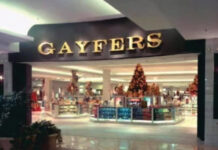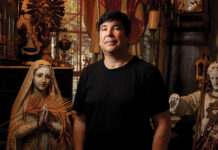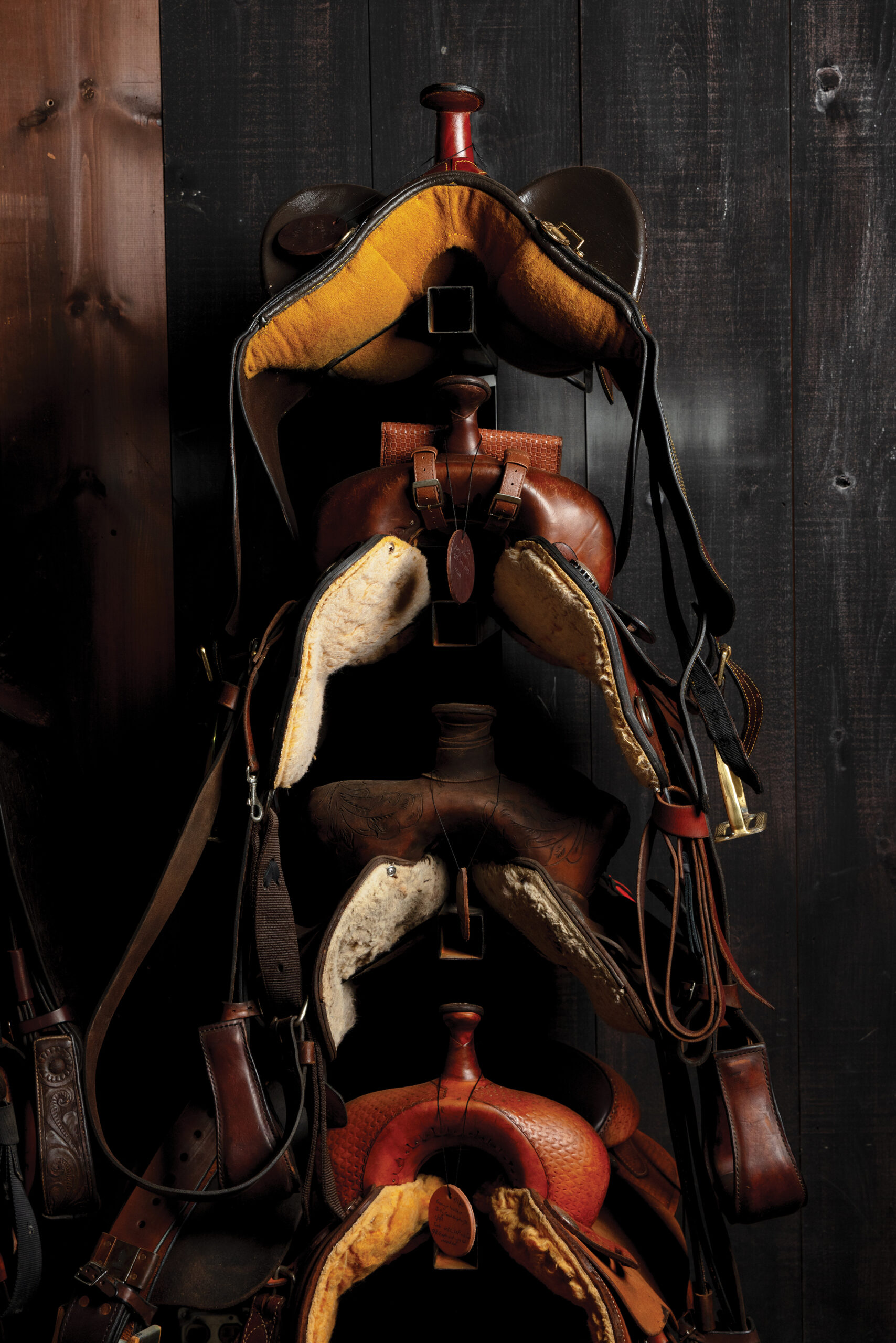
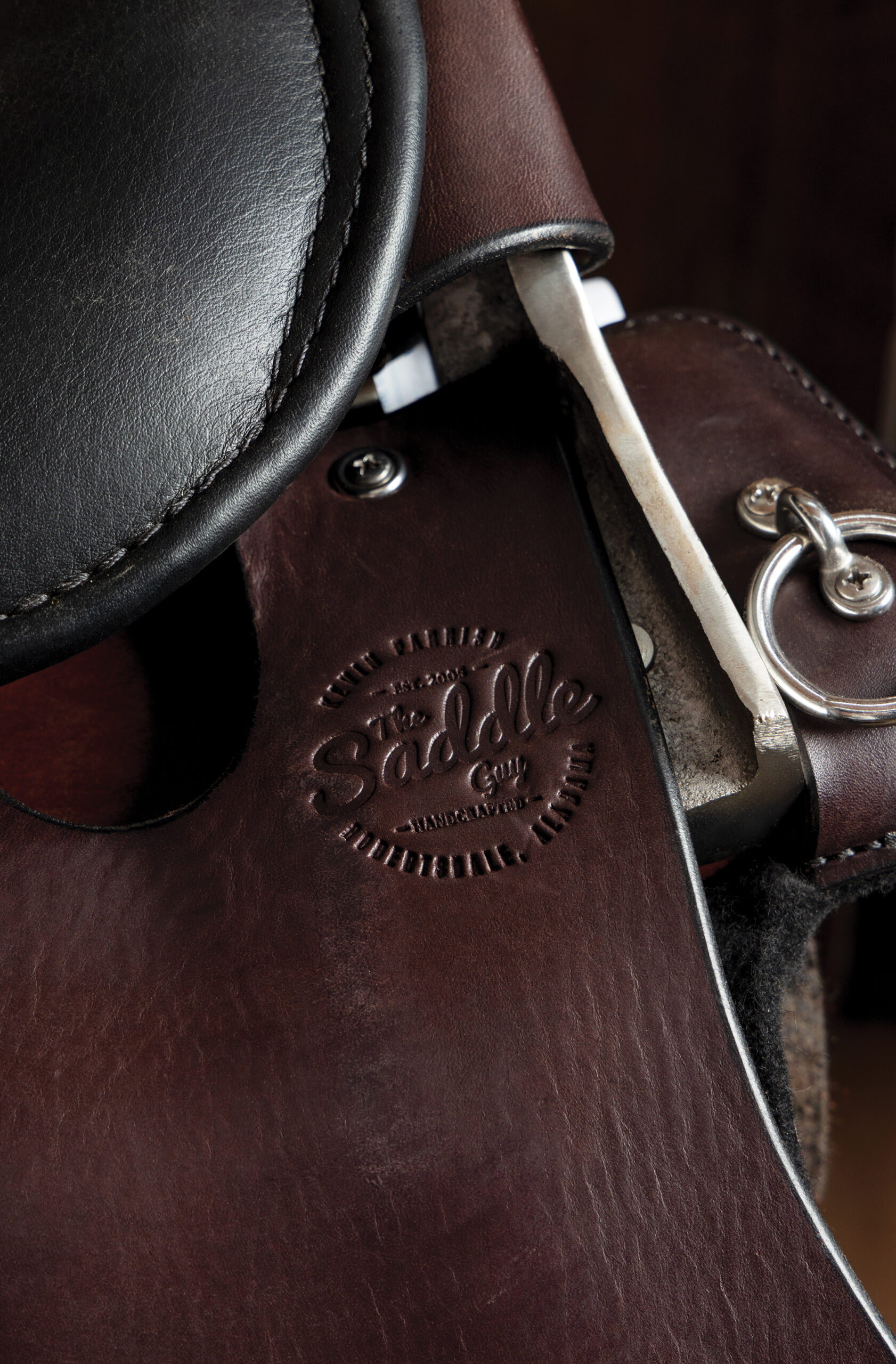
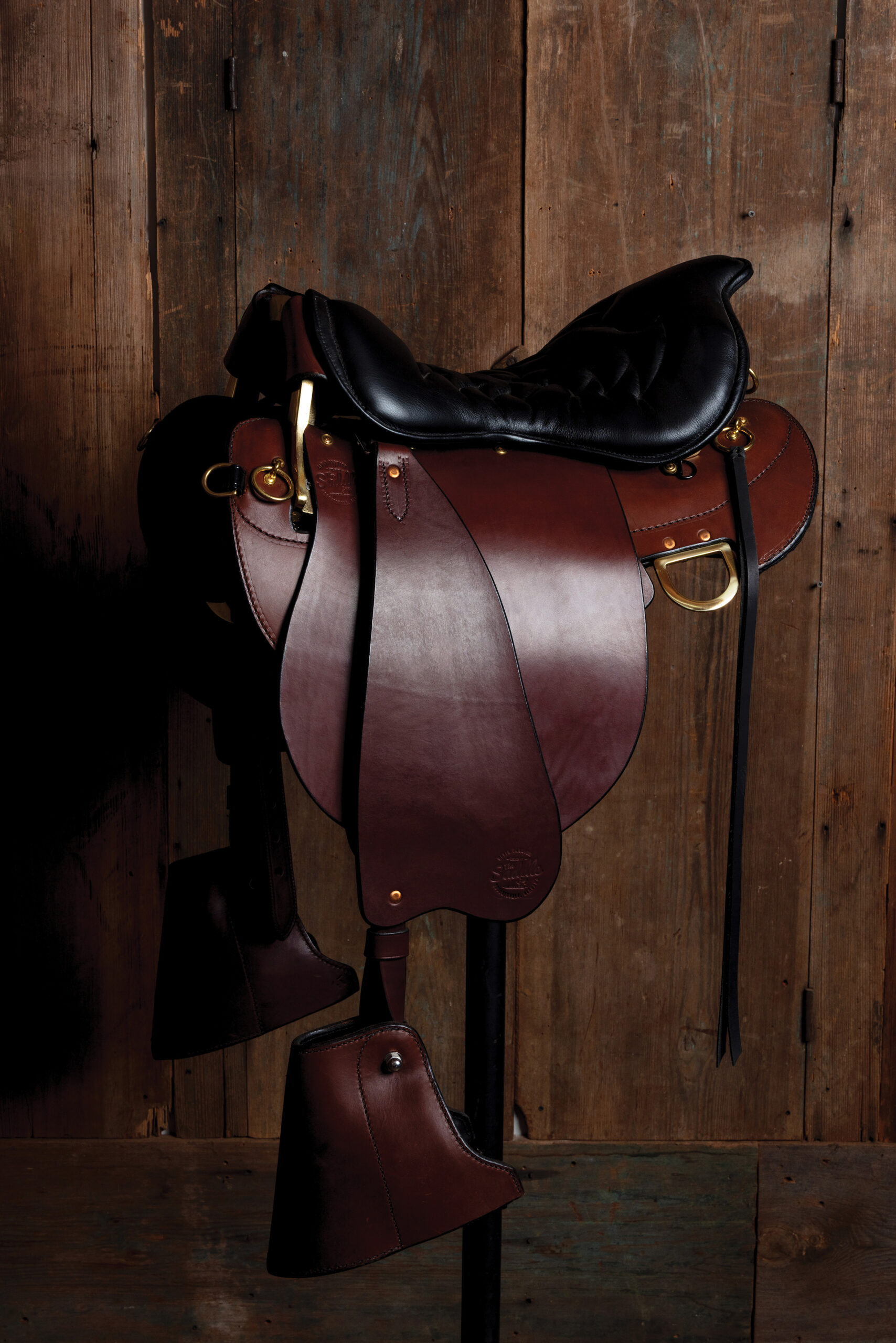
The workshop is noisy, a harmony of power tools, whirring fans and hammers striking metal. The place smells like leather. Kevin Parrish, The Saddle Guy, sits at his sewing machine in the middle of the room, working on the highly involved reconstruction of an antique sidesaddle.
The workshop is spacious but full. A leather-cutting station takes up an entire wall. Around the room, a small team of craftspeople build new saddles, repair old ones and make leather accessories that range from the practical to the delightfully nonsensical. (Case in point: A banana holder, designed to carry a single banana for snacking on the trail.)
They go about their work in a nondescript building on Highway 59 in Robertsdale, but despite this commonplace exterior, The Saddle Guy’s reputation draws admirers from across the country. Unlike most saddlers, who build slim English saddles or hefty Western ones, this crew specializes in custom-built trooper saddles, a niche type designed for long days on horseback.
With roots in deep rural Alabama, Parrish’s origin story borders on the legendary. As he tells it, back when his mom was a child, her dad would get drunk and ride around on his horse, shooting his gun in the air. At night, the faithful horse would bring him home, and he’d fall off in the yard, where Parrish’s uncle would have to go retrieve him. “All that to say, horses have always been a big part of my family,” he laughs.
Parrish learned leatherworking from his father, John, who had picked up the craft while stationed in Japan during the Korean War. John wasn’t a drinker, so he needed to find another way to occupy himself on his days off. As family lore goes, while everyone else went out and partied, he would go down to the craft shop and spend time with a saddle maker for Hirohito, the Emperor of Japan. There he learned the basics of leatherwork and carving.
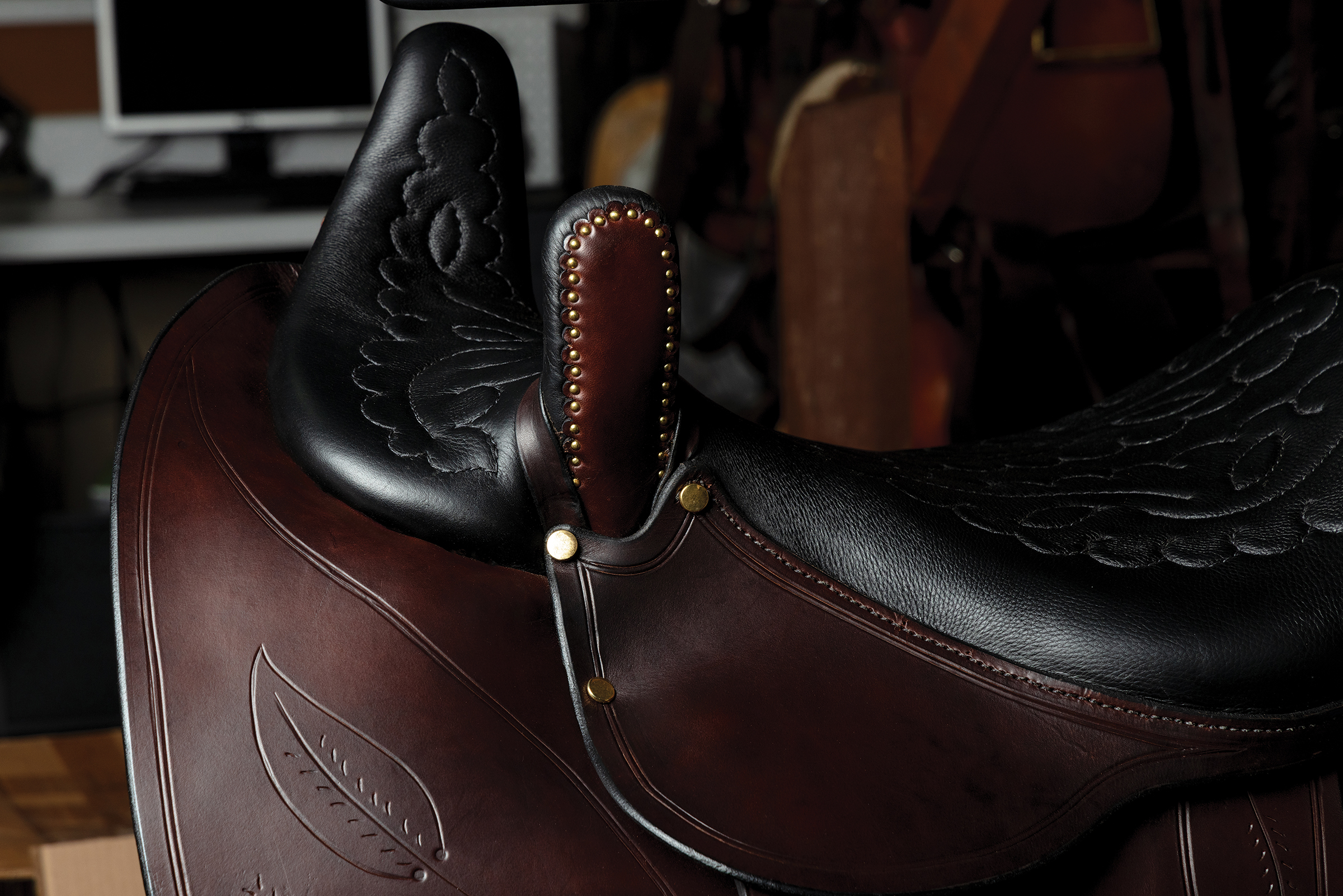
When he came back to the States and got married, his bride gave him a beginner’s leather craft kit. He made her a purse and took on little side projects. He bought every craft book he could get his hands on.
“Look at his stitching,” said Parrish, examining a leather-carved art piece his father made, now propped up in his workshop. “It’s not very good, but he did it all by hand.”
John didn’t set out to work on saddles; instead, the saddles came to him. One day, a neighbor brought in a saddle that needed fixing, and he said he’d give it a shot. A couple weeks later, somebody else showed up. Then someone else.
He roped his son into assisting. “I was watching cartoons on Saturday morning, and he said, ‘Come on, it’s time to go to work.’ And then I would, nights and weekends,” he said. “I was the only 13-year-old making five bucks an hour, which was big money.
“He and I would make some of the silliest stuff in the world — like a comb holder.”
But Parrish hated the work. His dad never let him touch a hammer or mallet. “I was to take apart, put back together, oil, wash. That’s all I got to do,” he said. “I swore if I ever got out of this saddle shop and out of this house, I was never coming back.”
He went to Auburn to become an accountant, but it only took a couple of years to realize that was never going to work. “If I have to look at numbers all day, in columns, I’m going to go crazy,” he said.
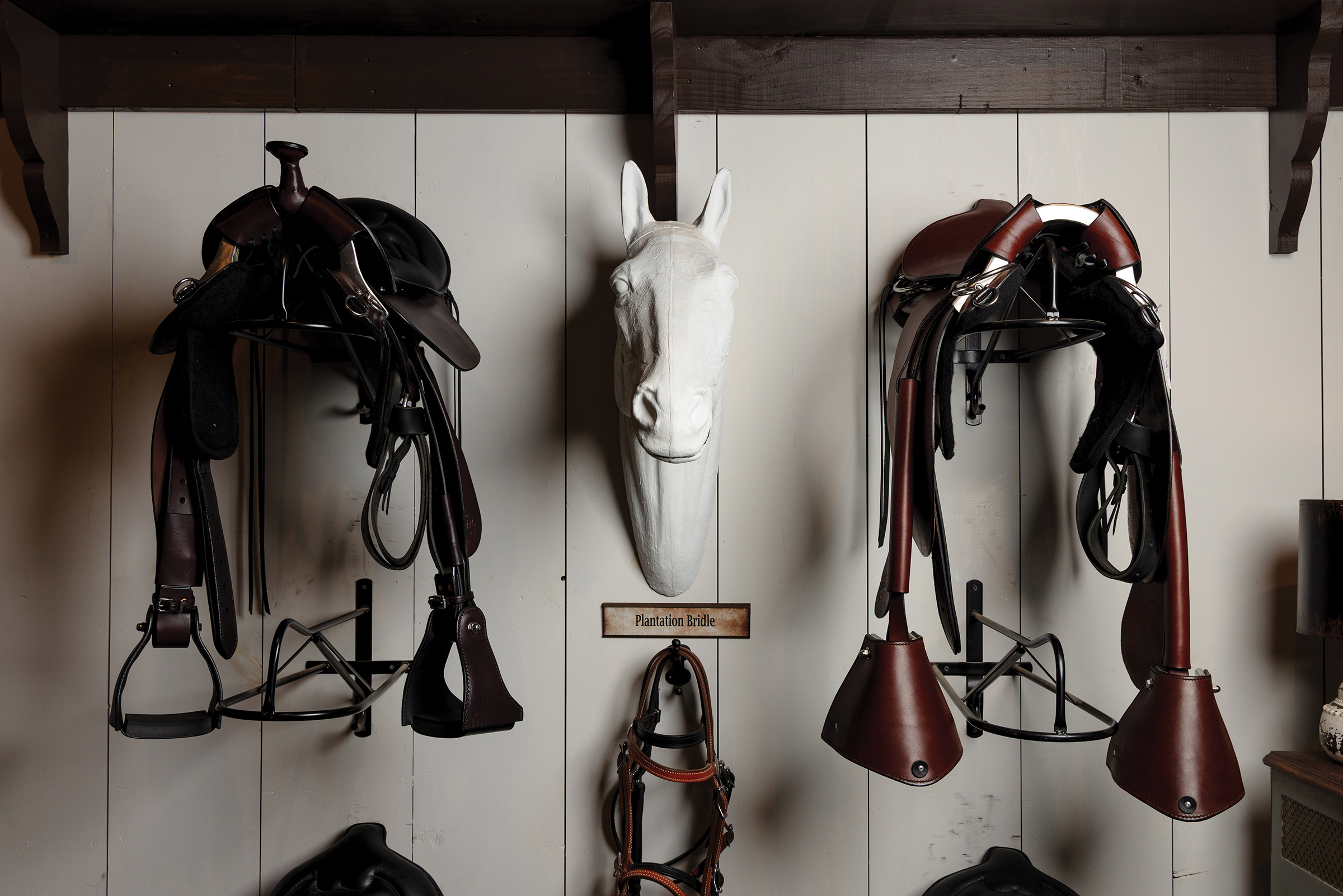
So he went home, back to working with his dad. And a curious thing happened: He realized that in the two years he’d been gone, something had changed. Now he had the freedom to do creative work, and he found he actually enjoyed it.
The father-son team ran a shop at the Montgomery Stockyards until John died in 1999. A couple of years later, Parrish went to work for Tucker Saddlery in Memphis — “saddle college,” as he put it. When Tucker bought out the Circle Y brand, he relocated to South Texas to work for them.
It wasn’t a good fit. “You walk out the front door and your glasses instantly fog every day but two weeks in December,” he said. “There was no sweet tea.” He did appreciate the brisket, but it wasn’t compelling enough to keep him in Lavaca County.
Unfortunately, moving home wasn’t the fix he thought it would be. “I had like $16 in my pocket when I got back home,” he said. He took seven jobs just to keep his truck from getting repossessed. “I worked for a Western wear store in the morning. I did telemarketing in the afternoon for Buckmasters. I worked at a company that made medical files. I worked at the pawn shop. I test drove the Santa Fe for Hyundai, for one day and one night,” he said. At the same time, he kept taking on saddle work out of his mom’s garage. He’d kept his dad’s tools, as well as his sewing machine.
One day, he looked around the garage and realized a turning point had crept up on him: He had two months’ worth of work lined up around the room. He quit his other jobs and started working for himself full-time, and he never looked back. Now a master of his craft, he’s become a sought-after teacher, sharing his knowledge with other budding craftspeople who are eager to carry on the leatherworking tradition.
While he leads the team in the workshop, his wife Whitney wears the rest of the business’s hats. “We met at Sunday school, and that’s worked out pretty well,” he said. “I highly recommend finding a spouse in Sunday school if you can.”
‘You Couldn’t Ask for Better Teachers’
The trooper saddles that the shop specializes in are based on British military saddles from the turn of the 20th century. What makes a trooper distinct is the seat, which is suspended off the horse’s back like a hammock. It’s intended to provide maximum comfort for both horse and rider.
It’s an especially well-liked saddle for field trials, mounted quail-hunting competitions that take place on sweeping 1,000-acre farms. While it’s popular in the South, Parrish has also seen the sport grow across the West, where rural land is plentiful.
From a production standpoint, Parrish likes the troopers, because even though their leatherwork tooling might be ornate, the construction of the saddles themselves is simple.
John Jordan, a relative newcomer at the shop, has honed his saddlery skills over the last year and a half by building the troopers. Originally a truck driver, he had to quit life on the road when his back couldn’t take it anymore. He’d been out of work for about six months when, one day at the vet’s office next door to The Saddle Guy, he scrolled past a social post that caught his eye: Parrish was hiring.
“I was wearing Crocs and shorts and a cutoff T-shirt. So I ran home, took a shower, got dressed, grabbed my resume, and came up and talked to him,” Jordan said. He had zero experience but showed a keen interest, so Parrish brought him aboard.
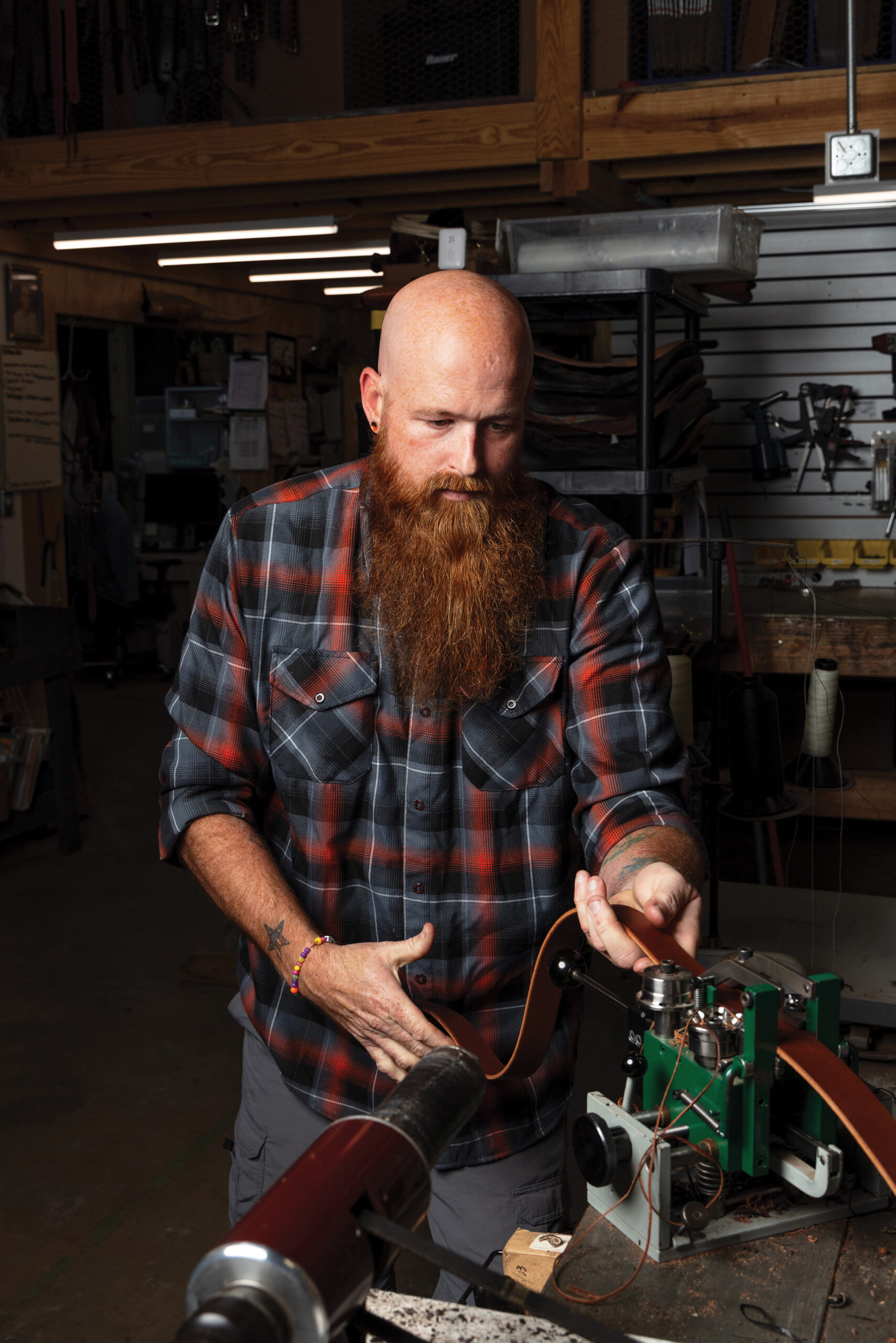
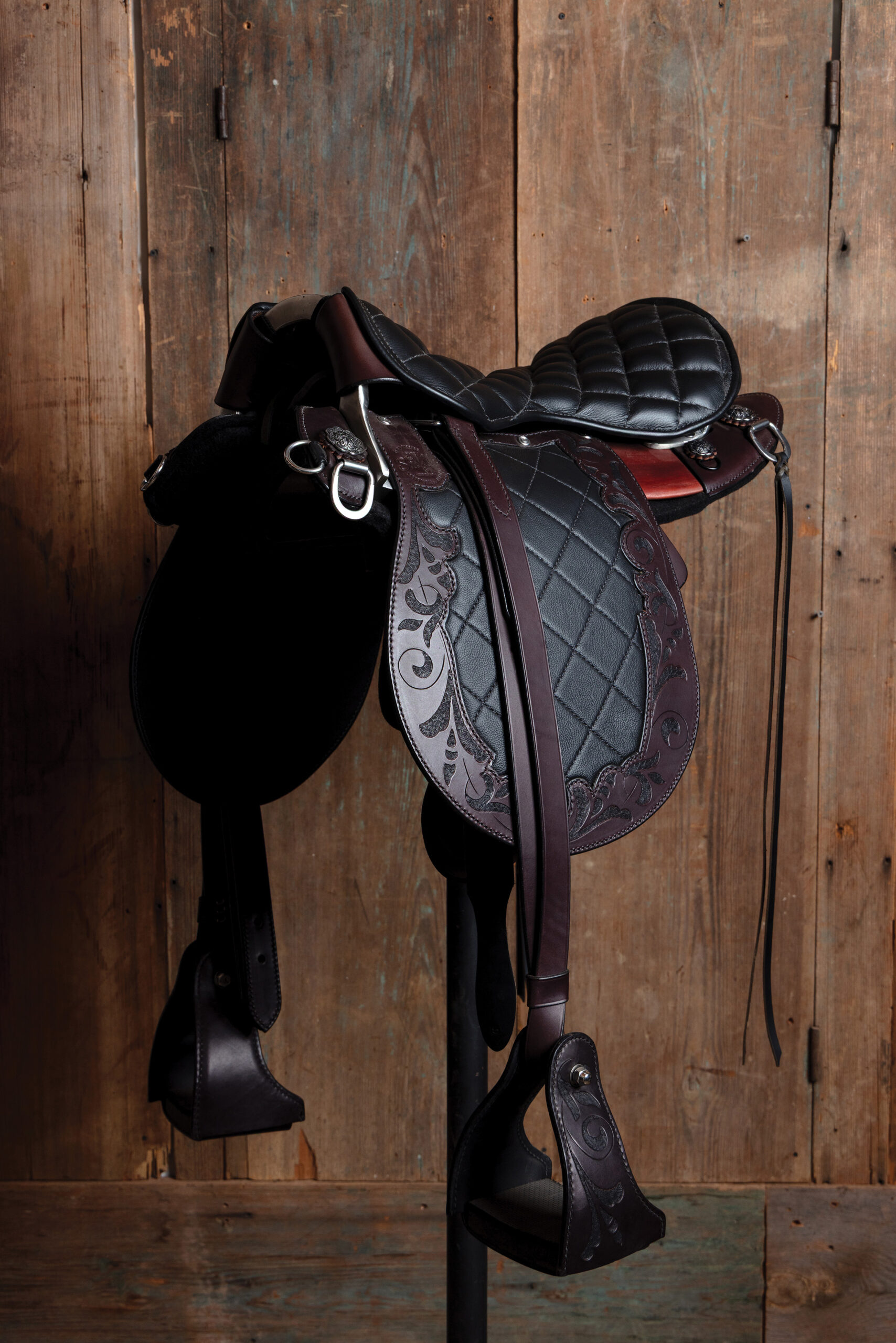
Everyone at the shop has pitched in to teach him the craft. “You couldn’t ask for better teachers,” Jordan said. “They have years of experience between them. I have a lot of questions that sometimes seem stupid to me, but they’re like, ‘No, that isn’t stupid’… I’ve messed up a lot of things in the process.”
“If you want to make an omelet,” responded Parrish, “you have to break some eggs.”
Jordan admitted, “I’ve broken dozens.”
When projects require fancy tooling or color work, artisans Joy and Price Reynolds jump into the picture. Price can turn a smooth piece of leather into a forest of oak leaves or a meadow of sunflowers. Joy is the color artist. “She does amazing things with paint and shading on leather that’s far beyond anything I’ve ever been able to do,” said Parrish.
Carrying on the Trade
Debbi Yates has her own quiet cubby in the shop, where she builds bridles, gun scabbards, rope boxes and other leather accessories. The resident equestrian expert has snapshots of her horses pinned up at her desk.
“I was a professional horse trainer for 38 years,” she said. “All I’ve ever done is work in the horse industry. I started helping a neighbor break horses when I was a tween… If Kevin has a question about something, he’ll say, ‘Hey, have you ever heard of this?’ And I’m like, ‘Oh yeah, we had two of those back in the ‘80s.’”
When she retired from horse training, she imagined she’d finally get some downtime. But one day, when Parrish was running behind in his shop, he asked if she could come help out for a few hours. She’d never tried her hand at leatherwork before, but she learned by doing. Seven years later, she’s still here.
Her son, Jarrod Stewart, works alongside her. A jack of all trades, he handles saddle repairs, shop management, machine maintenance and the occasional construction project. He lights up when he talks about his work.
“I’ve had Western saddles that were half burned in a house fire. We get saddles from Australia, Mexico — all kinds of different designs and styles. I really enjoy it, because one, it tests your abilities. You’re not working on the same thing every day. And then it gives you a good basis for design when you’re building a new saddle,” he said.
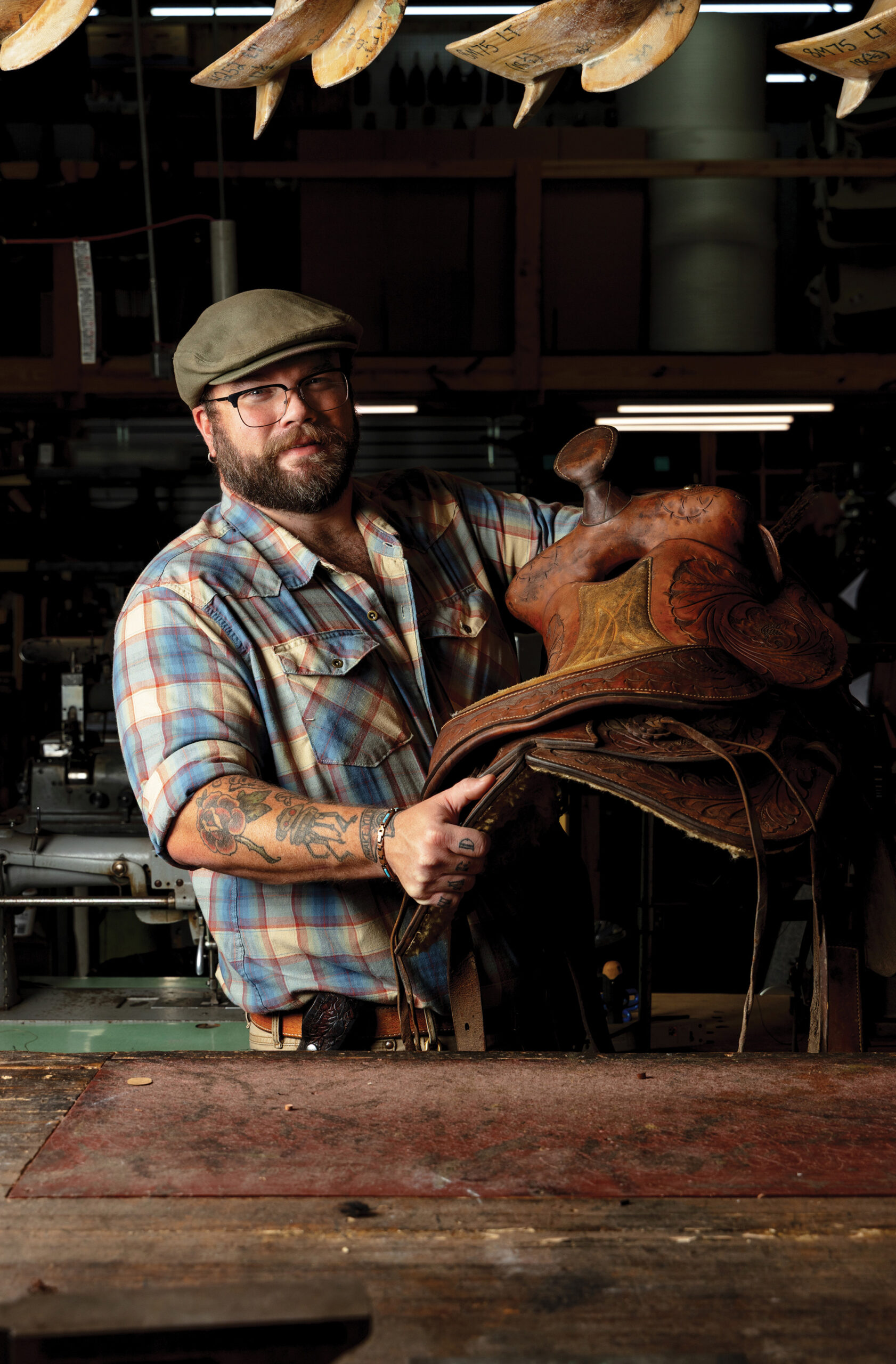
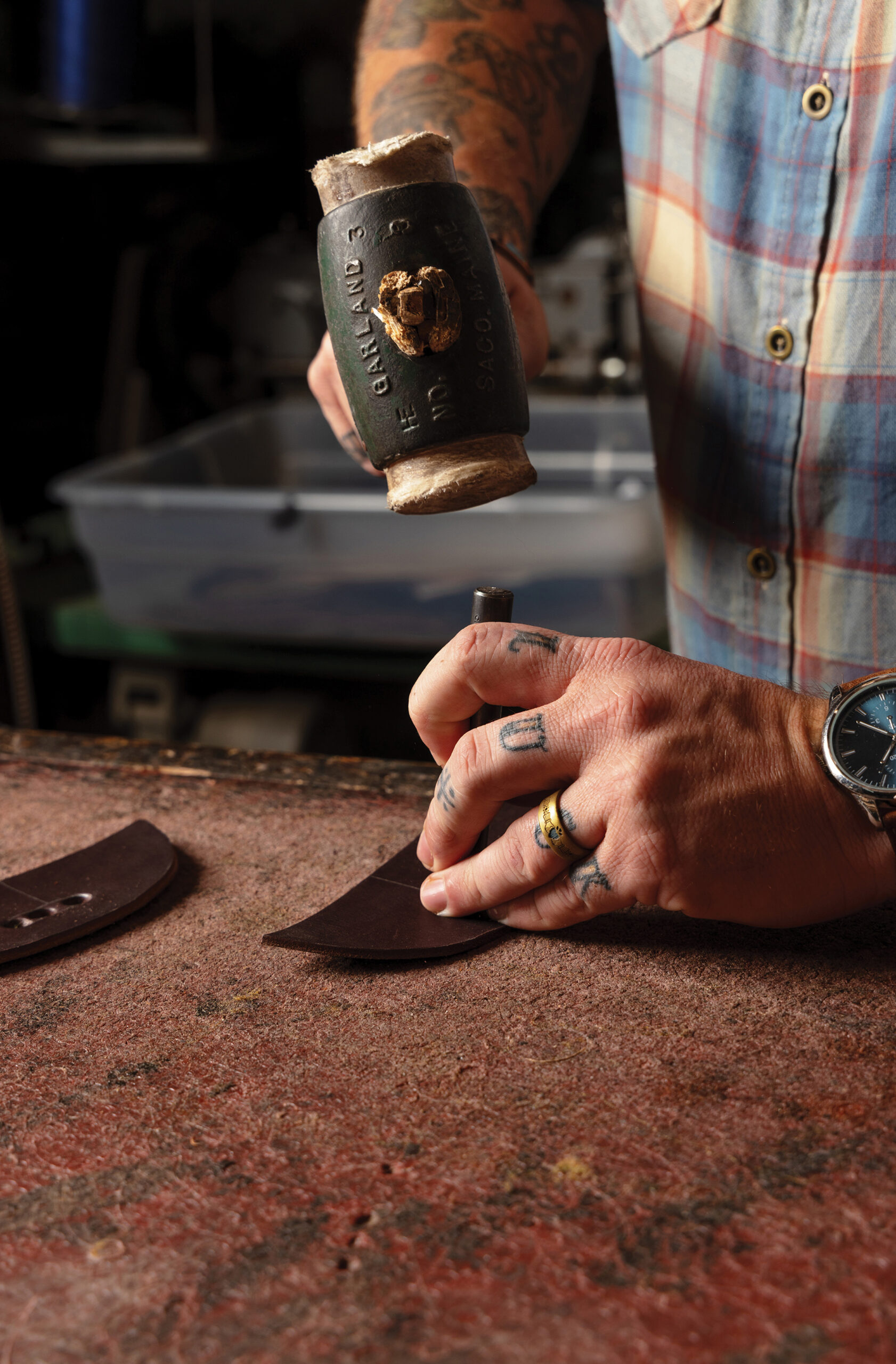
Occasionally a project comes his way that’s so far gone, he just has to stare at it for a little while to figure out where to start. But he compares it to eating an elephant: Take small bites.
Before he came to work for The Saddle Guy, he cut his teeth under local bootmaker Bill Nordan. “I always wanted to be an artist, and he needed someone to draw patterns,” he said. “And he said, I need to pay you, or I can teach you how to do this. And I said OK, feel free to teach me. Because at the time, I was working full-time at a bank as a loan officer, and I hated it.”
When Stewart heard that Parrish might be hiring, he came in and pestered him for a job. “I was kind of smart about it. I wore the boots that I made,” he said. When Parrish asked if he’d done much leatherwork, he set his foot up on the table. That clinched the deal.
Despite his experience, when he started with The Saddle Guy, Stewart was assigned to the same simple tasks that Parrish had done in his father’s shop all those years ago. Slowly he took on more responsibility, with Parrish teaching him bits and pieces here and there. After a time, he started building saddles. Eventually, even that became too repetitive. Now, repair work lets him flex his abilities in new ways. “This has been the best outlet that I could have ever found,” he said. “As long as I can make a living doing it, I’m going to keep doing it.
“I don’t want to see this trade go. I don’t meet a lot of young saddlers. I think I’m probably the youngest one that I’ve met. They’re usually in their 60s, if not more, with the exception of Kevin. So if I can keep doing this and have other people that want to do it, then I’ll stick with it.”
The Saddle Guy • Kevin Parrish | thesaddleguy.com



